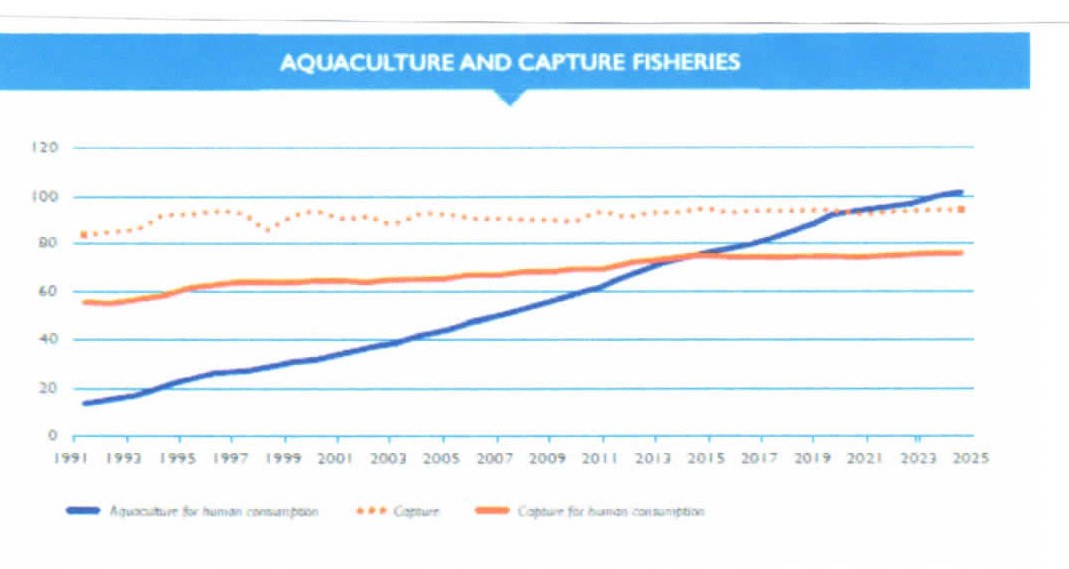Aquaculture
Aquaculture – the commercial production of finfish, shellfish and seaweed – is currently the fastest growing form of food production on earth.
Already an approximately US$245 billion industry. With the rapid growth of aquaculture at almost 8% per year over the past decade, aquaculture holds great promise to meet growing global demand for more sustainable forms of protein.
To feed a projected population of 9.7 billion people in 2050 the world must increase food production by as much as 70%.
To meet this challenge, the seafood sector – and aquaculture in particular – will have a critical role to play.
Aquaculture can contribute to an environmentally and socially beneficial global food system by capitalising on the following key elements:
- Production efficiency: Aquaculture can have a lower environmental footprint than most meat products in terms of freshwater use, C02 emissions and land usage. For example, present day salmon farming operations have a feed conversion ratio (FCR) close to 1:1. ie: it takes approximately 1 kg of feed to produce 1 kg of weight gain. By contrast, chicken, pork and beef have FCRs of about 2, 4 and 8, respectively. Additionally, the commercial cultivation of aquatic plants (seaweed) and bivalve shell fish (mussels, oysters etc.) require no external feed and can in some cases have beneficial effects on marine ecosystems.
- Land use limitations: Land-based crops face increasing uncertainties resulting from climate change including severe storm events, rising sea levels, higher temperatures, droughts and in many places decreased freshwater resources. Aquaculture presents as a food production model that can use scarce natural resources in more efficient ways.
- Sustainable Supply: Well over a third of wild fish stocks worldwide are fished beyond sustainable limits and wild catch rates have plateaued. Aquaculture represents an alternative method of producing seafood, that potentially avoids some of the ecological risks associated with wild-capture fisheries such as by-catch.

- Food Security and Nutrition: Among animal protein sources, seafood is among the healthiest for human consumption. Seafood provides a healthy alternative to chicken, beef and pork and is a necessary source of nutrition (protein), long–chain Omega 3 fatty acids and micronutrients. These benefits are particularly important in developing countries for maternal health and early childhood development.
Consumption of fish as a human food source has more than doubled on a per capita basis over the past 50 years and is forecast to keep rising.

- Management of Supply Chains: The controlled nature of aquaculture production can allow for improved traceability, logistics, inventory management, product uniformity, demand response and product quality, compared to wild–caught seafood. Innovative and improved farming systems and technologies are increasing the potential to grow seafood close to end markets while limiting adverse impacts to marine ecosystems.
The Food and Agriculture Organization of the United Nations (“FAO”) has labelled Asia as a “hub” for the quantity and potential of marine aquaculture.
As a major and growing market for fish, Asia – countries in South Asia, and South East Asia, China and Japan – is projected to account for 70% of global fish consumption by 2030. The aforementioned regions are thus increasing their investments in aquaculture to help meet growing demands boosting intra-regional trade, both for high commercial value and low commercial value fishing products.